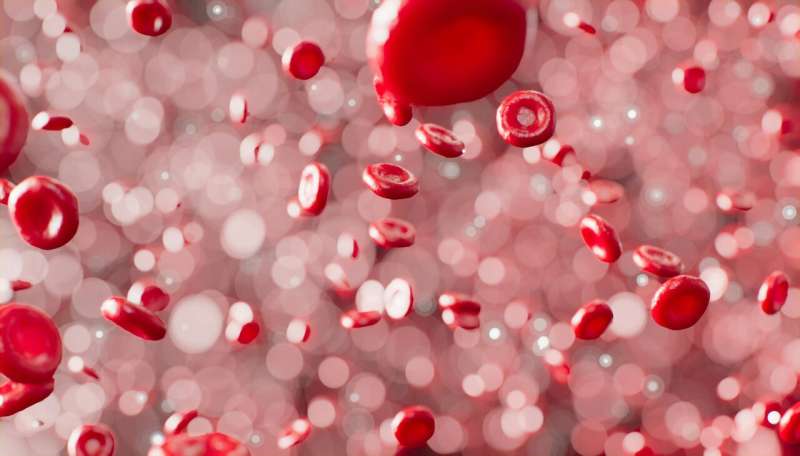This article has been reviewed according to Science X's editorial process and policies. Editors have highlighted the following attributes while ensuring the content's credibility:
fact-checked
peer-reviewed publication
trusted source
proofread
Improving treatment for rare acute myeloid leukemia sub-type seen in young adults and children

Peter Mac clinicians have described how a young patient with a rare, aggressive and only recently described form of acute myeloid leukemia (AML) has responded to genomically-guided targeted therapy.
Their report, published in the New England Journal of Medicine, adds to an emerging body of evidence about how best to treat the new AML sub-type known as UBTF-TD AML.
UBTF-TD AML was first recognized as a new subtype of leukemia in late 2022 and it is seen mostly in young adults and children with AML. Despite being new, it is known to have a higher risk of relapse and poorer survival outcomes.
Associate Professor Piers Blombery said the patient, a young man, had relapsed twice on conventional AML treatment and genomic testing—performed through the Wilson Center for Blood Cancer Genomics—confirmed it was UBTF-TD AML.
Based on biological understanding of this leukemia, and emerging data from experiments in the laboratory, the man was given compassionate access to the menin-inhibitor drug revumenib.
His condition improved and he went into remission for five months before another relapse. Further genomic assessment of the man's relapse leukemia showed mutations that caused the resistance of the leukemia to this targeted therapy.
"We have described a clinical response to revumenib in a patient with UBTF-TD AML," says Assoc Prof Blombery, who is a hematologist a Peter Mac.
"The clinical response to revumenib and subsequent potential on-target resistance mechanism observed in this patient provide a strong rationale for the further investigation of menin inhibitors, including as part of combination therapeutic strategies to overcome drug resistance in this high-risk AML sub-type in need of new treatment approaches."
The man received precision diagnostics via the Wilson Center for Blood Cancer Genomics, at Peter Mac, and this research was also supported via a Synergy grant from the NHMRC.
UBTF-TD AML is thought to account for around 4% of AML cases in children and up to 3% of AML cases in adults under the age of 60.
More information: Ing Soo Tiong et al, Response and Resistance to Menin Inhibitor in UBTF –Tandem Duplication AML, New England Journal of Medicine (2024). DOI: 10.1056/NEJMc2404110


















